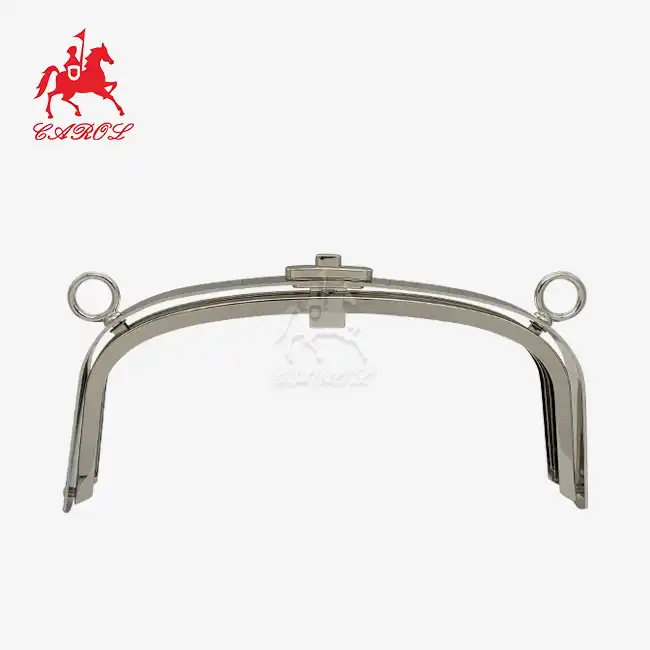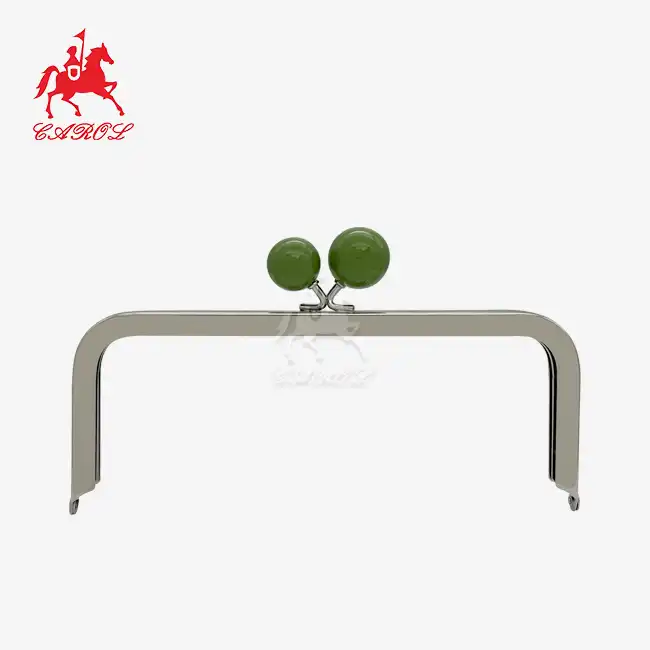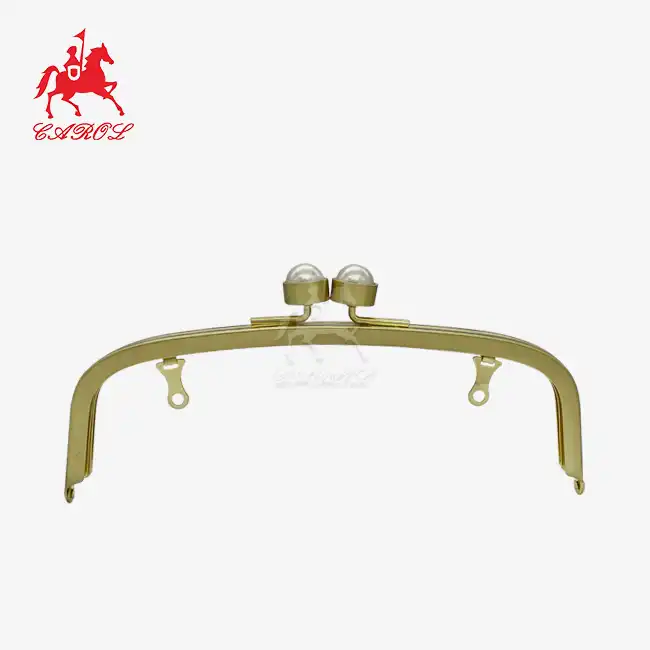How to measure a bag opening to choose the right metal purse bag frame size?
When crafting the perfect handmade bag or purse, selecting the correct metal purse frame isn't just about aesthetics; it's about functionality and structural integrity. Many crafters and designers encounter frustration when their carefully sewn creations don't properly fit the frame they've purchased. This mismatch can lead to puckering fabric, gaps, or even compromised durability of the finished piece. Understanding how to accurately measure your bag opening ensures you'll select the perfect frame size the first time, saving both time and materials.
Identify the "True Bag Opening" to Measure
The concept of the "true bag opening" often confuses even experienced bag makers. When measuring for a metal purse frame, you're not simply measuring the width of your pattern or template; you're measuring the actual opening where the frame will attach.
The true bag opening refers to the curved or straight edge that will directly connect to your metal purse frame. This measurement is crucial because frames come in specific sizes, and even a small discrepancy can result in an ill-fitting attachment. For straight-edged frames, measure the width at the very top of your bag pattern. For curved frames, you'll need to measure along the curve itself, not just from end to end.
Many crafters make the mistake of measuring their bag pattern flat on a table, which doesn't account for how the fabric will curve when assembled. Instead, baste your bag pieces together temporarily and measure the opening while holding it in the position it will be used. This provides a more accurate representation of the finished opening size.
Remember that the true bag opening might differ slightly from your pattern measurements due to seam allowances. For example, if your pattern indicates a 20cm opening but includes a 1cm seam allowance on each side, your true opening will be closer to 18cm. Accounting for these differences prevents the frustration of ordering a frame that's too large or too small.
Professional bag makers often create a mock-up or prototype with inexpensive fabric before cutting into their final materials. This approach allows them to test the fit with different frame sizes and make adjustments as needed. The mock-up serves as a practical guide for measuring the true opening accurately.
For unusually shaped bags or complex designs, consider creating a template from cardboard or heavy paper that matches your desired opening. This template can be compared directly to frame options or sent to a metal purse frame supplier for custom sizing recommendations.
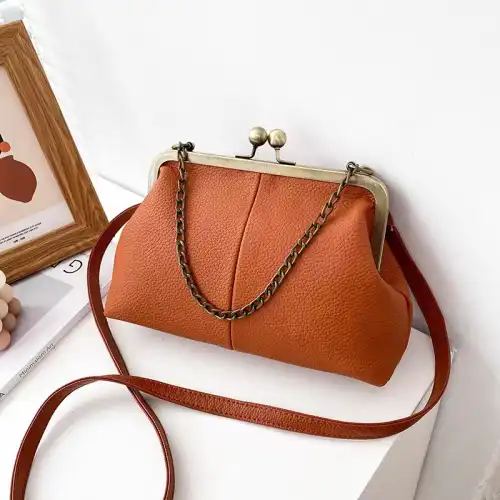
Account for Fabric Thickness
One of the most overlooked aspects of choosing the right metal purse frame is accounting for fabric thickness. The channel of a purse frame, that narrow groove where your fabric inserts, comes in various widths designed to accommodate different materials. Failing to consider this factor can result in a frame that either won't close properly or damages your fabric when forced shut.
Lightweight fabrics like cotton or silk require frames with narrower channels, typically 1-2mm wide. Medium-weight fabrics such as linen or light canvas work well with standard 2-3mm channels. Heavy materials including leather, upholstery fabric, or multiple layers of interfacing need frames with wider channels of 3-4mm or more.
The construction technique also affects the thickness at the opening. Techniques that fold the fabric multiple times, such as binding or French seams, significantly increase the bulk at the insertion point. Similarly, if you're adding stabilizers like fusible interfacing or Peltex, you'll need to factor these additional layers into your measurement.
A practical approach involves measuring the actual thickness of your prepared edge using calipers or stacking the layers and measuring with a ruler. This gives you the precise channel width needed for your project. Some crafters create a small sample section of their bag edge, complete with all interfacings and construction techniques, to test with different frame options before committing to the full project.
Remember that thicker materials not only require wider channels but may also benefit from frames with stronger mechanisms. Heavier fabrics put more stress on clasps and hinges, so choosing a frame with robust hardware ensures longevity of the finished piece.
Carol Metal offers frames with various channel widths to accommodate different fabric thicknesses. Their square metal purse frames, for instance, come with channel options ranging from 2mm for lighter fabrics to 4mm for leather and heavy materials, ensuring a perfect fit regardless of your chosen medium.
Match Frame Shape to Bag Opening
The relationship between frame shape and bag opening extends beyond simple measurements. The contour of your frame dramatically influences both the functionality and aesthetic of your finished purse. A mismatch between these elements can compromise the bag's usability and visual appeal.
Metal purse frames come in diverse shapes,rectangular, oval, curved, heart-shaped, and numerous variations in between. Each shape creates a different silhouette and affects how easily items can be inserted and removed. For example, a rectangular frame with a flat bottom provides stability when the purse stands on a surface, while curved or rounded frames often allow the opening to expand wider for easier access.
When designing your bag, consider how the intended use aligns with different frame shapes. Evening bags that need to hold just a few essentials might work beautifully with decorative heart-shaped frames like Carol's 18cm heart-shaped metal purse frame. Meanwhile, everyday bags that require frequent access benefit from generous curved openings that expand widely.
The proportions of your bag also influence frame selection. A deep bag paired with a narrow frame creates accessibility issues, while an extremely wide frame on a shallow bag looks disproportionate. Generally, the frame width should be approximately 1/2 to 3/4 of the bag's depth for balanced proportions.
Crafters often overlook how the frame shape affects the bag's drape and structure. Straight-edged frames like the 13cm square metal purse frame with screw closure create crisp, defined lines that work beautifully with structured fabrics and geometric designs. Curved frames naturally complement softer materials and rounded shapes, allowing the fabric to fall in gentle folds.
For custom or unusual designs, consider working backward—choose the frame first, then design the bag around it. This approach ensures perfect harmony between the opening and the frame while eliminating measurement concerns. Many professional bag designers maintain a collection of their favorite frames and create patterns specifically tailored to each one.
Some frames feature special hardware elements like decorative clasps, chain attachments, or unique locking mechanisms. These functional details should complement your design concept. For instance, Carol's square metal purse frame with zinc alloy big ball lock offers both security and visual interest as a focal point of the finished bag.
The attachment method also varies between frame types. Some require sewing, others use glue, and some employ a combination of techniques. Consider your comfort level with different attachment methods when selecting a frame shape, as some are more forgiving for beginners while others demand precision.
Metal Purse Frame Supplier: Carol
Finding a reliable supplier for quality metal purse frames can transform your creative process from frustrating to fulfilling. Carol Metal stands as a professional customized metal purse frame manufacturer and supplier in China, specializing in providing wholesale bulk metal purse frames at competitive prices. They have been making hardware items and metal frames for handbags, leather goods, and luggage for a long time and are very good at it. They are also good at sales and design.
What sets Carol Metal apart is their comprehensive manufacturing capability. With their own electroplating factory, they provide seamless service from design conceptualization through order processing, production, plating, and packaging. This vertical integration ensures consistent quality control and faster turnaround times for both standard and custom orders.
Their product catalog showcases versatility in both style and functionality. The square metal purse frame with zinc alloy big ball lock measures 20cm x 8cm and features an elegant orange finish. For designers seeking something distinctive, their heart-shaped metal purse frame at 18cm x 6cm offers romantic appeal with its OEB finishing. Those requiring smaller options might prefer the 13cm square metal purse frame with screw closure, which combines practical functionality with a luxurious gold finish.
Carol Metal is great at customizing options beyond the usual ones. So they can be made in any size, color, or material you want. This makes them a great partner for artists with a unique idea or needs that are specific to a brand. Parts made of iron, brass, zinc alloy, and plastic are among the materials they use. Each one looks different, weighs differently, and lasts longer.
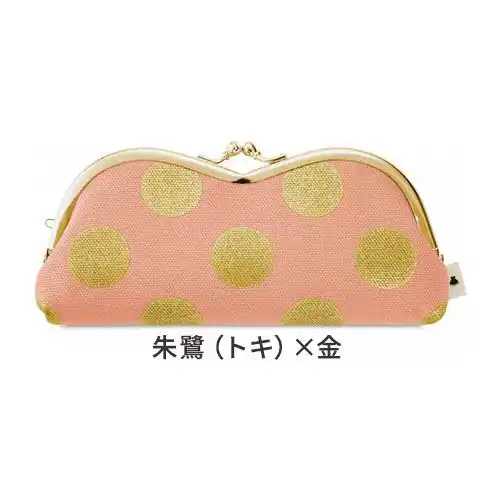
Crafters and designers who want to add professional-quality hardware to their projects will get consistent results if they work with a well-known source. Carol Metal's products look great, are made from materials that are safe and good for the earth, last a long time, and come with full service after the sale. Their dedication to quality has made them well-known in markets both at home and abroad.
Whether you're creating a single signature piece or planning a production run, selecting the right metal purse frame makes all the difference in your finished product. If you carefully measure the real opening of the bag, take into account the thickness of the fabric, and match the frame shape to your design, you'll get professional results that make both the creators and the buyers happy.
For quotations or to discuss custom metal purse frame options for your next project, contact Carol Metal at tony@carolxiao.com. Their team of experts can help you pick the best frame for your design needs. This way, you can be sure that your homemade bags are both beautiful and useful.
References
1. Chen, L., & Zhang, Y. (2023). Modern Techniques in Bag Construction: Materials and Methods. Journal of Fashion Design, 45(3), 112-128.
2. Williams, S. (2022). The Complete Guide to Purse Frame Selection. Crafters Publishing House, London.
3. Anderson, H. (2024). Material Considerations in Luxury Handbag Production. International Journal of Fashion Technology, 12(2), 78-94.
4. Lee, M., & Park, J. (2023). Hardware Elements in Contemporary Bag Design. Asian Journal of Fashion Studies, 18(4), 201-215.
5. Thompson, R. (2024). Measurement Techniques for Precision Crafting. Artisan's Quarterly, 56(1), 34-49.
_1753256285958.png)

_1754990596544.webp)
